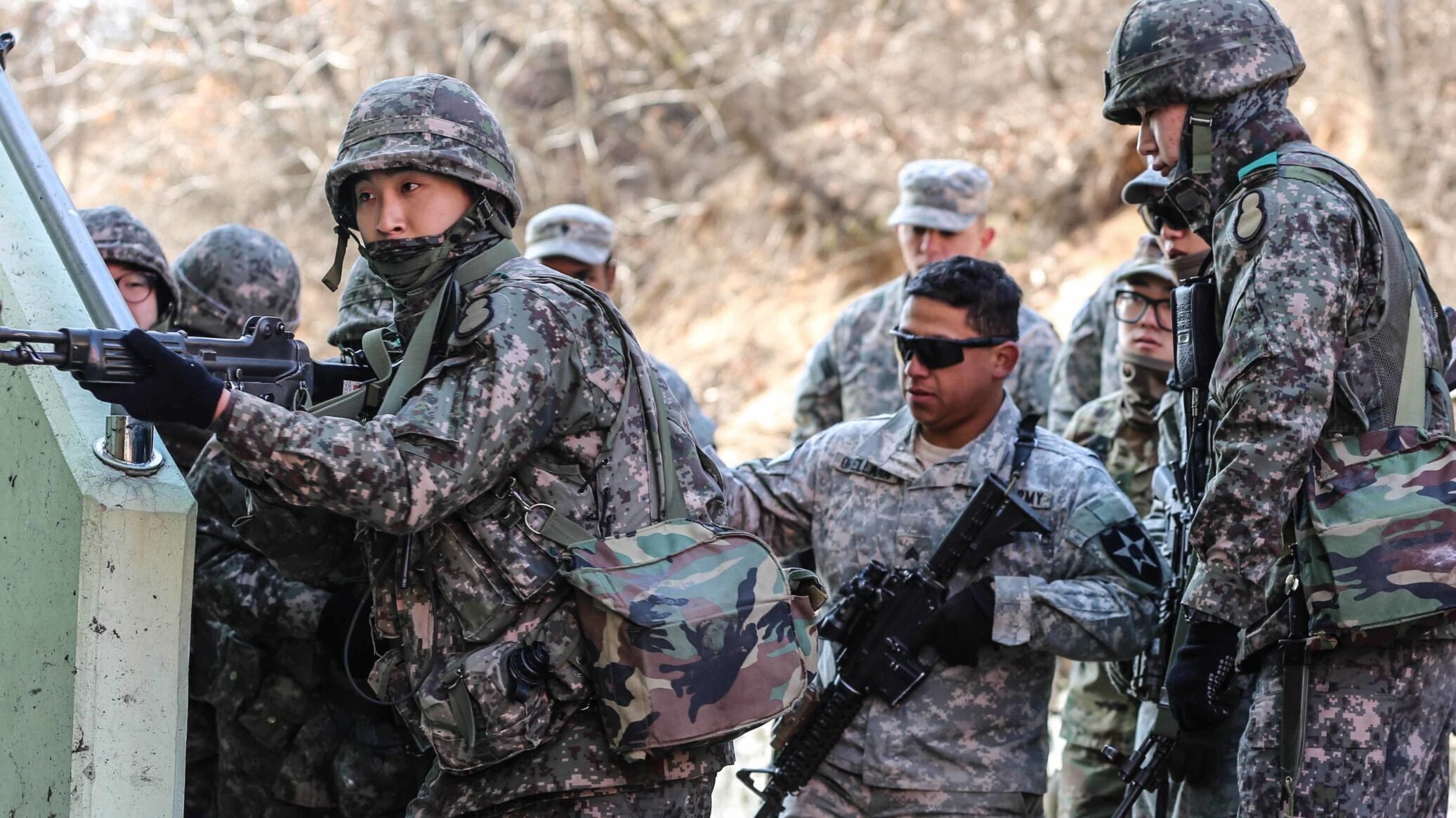
U.S. Soldiers assigned to Bravo Company, 2nd Battalion, 3rd Infantry Regiment and Republic Of Korea Soldiers (ROK) with 8th Division, 137th Battalion conducts an urban breaching with South Korean troops at Rodriguez Live Fire Range, South Korea, March 9, 2016. The training is the second leg of Pacific Pathways. (U.S Army photo by Staff. Sgt Kwadwo Frimpong/released)
LANPAC: In a stark critique of the 420,000-strong South Korean army, the former deputy commander of South Korea’s First Army described the “conditions for training are very, very bad,” driven by high turnover of troops every year and the lack of live fire training.
In-Bum Chun, former deputy commander of South Korea’s First Army, said after his panel on “Deterring Aggression through Joint and Coalition Readiness” that he believes it will take five years to make a significant improvement in the readiness of Republic of Korea troops. A key, he believes, will be creation of a senior NCO corps — experienced solders who can help because of their deep experience — that can speak truth to power to officers. The current Confucian culture makes this difficult with its emphasis on respect for hierarchy, but that, he said hopefully, is beginning to wear thin.
Chun, who retired in July 2016, offered a few metrics to illustrate the problem, citing 60% turnover of troops every year because of Korea’s conscript force system. He also said he knew of many troops who had not experienced live fire training for a decade.
“So, we just can’t manage the kind of level of training that we used to be amazed that others require,” he said during the panel. Many commanders consider live fire training crucial to prepare troops for the reality of combat.
He appealed for help from the United States to help build the NCO corps and to rectify the training situation.
Another panelist, a Korean expert with the Center for New American Security, pointed to the Trump administration’s decision to eliminate many military exercises, saying that “US-South Korea joint military readiness has severely deteriorated over the past five years.” Duyeon Kim, the CNAS expert based in Seoul, also pointed to the recently defeated “South Korean progressive administration” as a cause of lower readiness.
At the end of the panel the US commander of the Eighth Army in Korea, Lt. Gen. Bill Burleson, made a point of stating categorically that the forces facing North Korea are ready to fight.
“They’re flying reconnaissance aircraft as we speak. They are Patriot crew members. They are artillery batteries and missile batteries that are standing ready to respond within minutes. There’s a network that’s in place. They are an armored Brigade Combat Team. There are all the frontline ROK corps with young men and women standing looking into North Korea. And despite the challenges that you’ve heard described,” Burleson said, “they’re ready”.
It’s worth noting that Chun praised Burleson “as a godsend because he truly tries to understand the Koreans.” The bad news is that Chun said he finds only “one in 10” American officers do that.






















